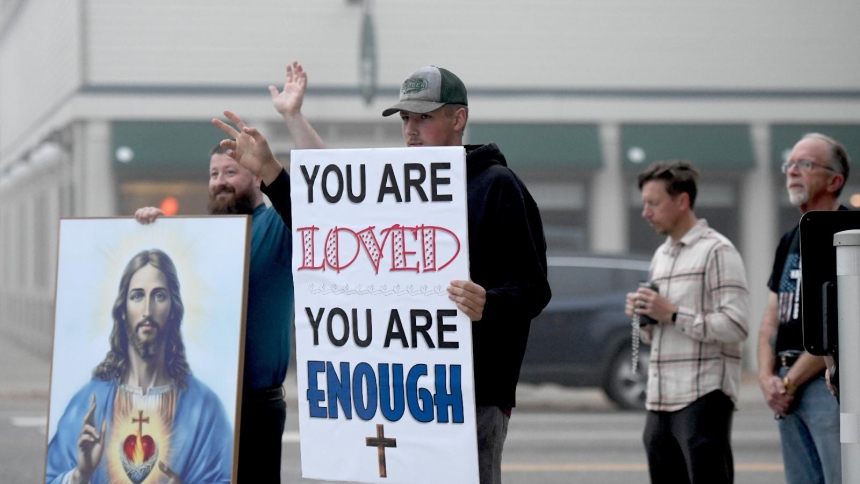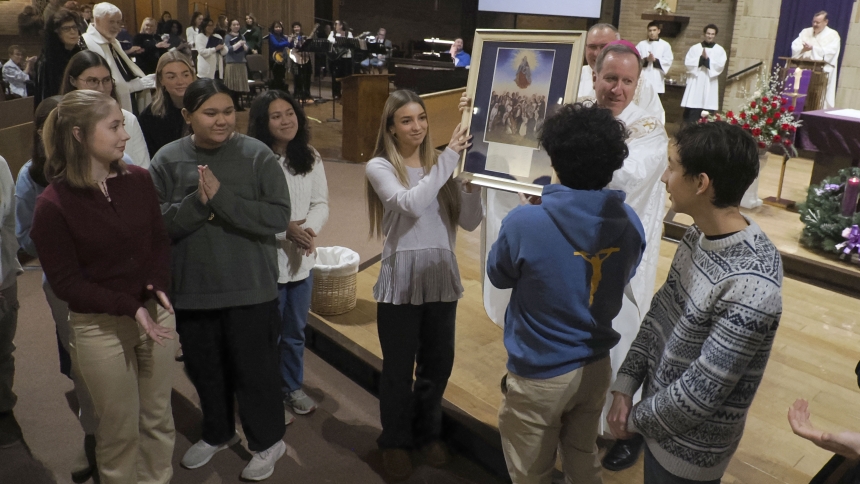
As published in the Northwest Indiana Catholic on May 29, 2016
One of the great blessings of the Catholic Church in America is our common immigrant and richly ethnic origins. Catholics from all over the world came to this new land of opportunity with little more than their faith and a work ethic to seek a better life.
They sacrificially built parishes, schools and hospitals to serve the needs of the community, striving to pass on both faith and culture, even as they adapted to the ways of the United States. This ethnic diversity in America makes our Church a true microcosm of the universal Body of Christ.
Every blessing has a challenge within it; we now face the reality, along with every diocese across the country, of having many parishes and buildings in close proximity to each other that are no longer needed or sustainable.
Some of the sharpness of our ethnic distinctions has faded with the generations: people have moved out to new suburbs, fewer young people are active in Church, we have far fewer priests, and the economic downturns have diminished financial stewardship. All of these factors compel us to look honestly and lovingly at our current parish structure and ask some hard questions.
Is a parish sustainable when it offers one Mass on Sunday for 50 people, most of whom are elderly? Does it make sense to keep two or three parishes open when they are all struggling and are in walking distance of each other? Is it responsible to pay liability insurance on massive old buildings that stand empty 90 percent of the time?
Can we create new models of parish structure that are economically more efficient, so more precious resources can actually fuel the mission of the Church?
These past months, Father Joe Pawlowski, our Vicar General, Dr. Tony Bonta, my chief of staff, Kem Markham from the schools office and Adeline Torres, head of the Intercultural Ministries office went to every priests’ deanery meeting to conduct listening sessions and garner feedback regarding the creation of a diocesan parish plan, which would guide our decisions about parish configurations.
These conversations among the priests were thoughtful, incisive and clearly marked by a deep love for the diocese and an urgent realization that we need to plan the future together. I am grateful for the priests’ feedback.
The Priest Consultors and the committee named above will formulate two initial drafts of a parish plan for each of the four deaneries, one more aggressive than the other. The priests will receive these drafts in July, in preparation for a meeting in August where they will offer their feedback to these proposals. Consultation will continue into the fall with the diocesan pastoral council, our deacons, local lay leadership in the parishes and parishioners at-large to ensure that all of these representative bodies and people weigh in on these important proposals.
The goal of this lengthy process is a finalized parish plan for the entire diocese by next year.
I need to take care that this planning process does not derail the diocesan synod, which will be occurring at the same time. I explain the difference between the two by defining the synod as the way to animate and plan the mission of the local Church (in other words, WHAT we do), and the parish plan as the creation of the structure to make that mission effective (in other words, HOW we do it).
All of this planning requires much prayer, thought, conversation, generosity, confidence in the future, as well as grieving some losses along the way. We will encounter difficulties, roadblocks, conflicts and disagreements, but I truly believe we cannot afford to do nothing, naively hoping that the Church will simply go on as it always has without some proactive work to keep our exciting mission vital and transforming.
Our neighbors to the west, the Archdiocese of Chicago, are contemplating the possibility of closing over 70 parishes in the upcoming years. The pain of such closure and change, there and here, is real and challenging. Some parishioners can trace their family’s membership in a parish back for generations; many were baptized there and have worshiped in the same community their whole lives. The grief that accompanies such loss is like a death. We need to acknowledge the feelings, history and experience of such dedicated folks.
We also need to be realistic about the future sustainability of parish life in our diocese by planning and acting now from a position of relative strength, so that the mission of the Church will flourish with lively liturgies, transformative catechesis, effective outreach to the poor and needy and a thriving spiritual comm in each parish.
The tipping point will come when we realize that what we gain is greater than what we give up. We are holier, smarter, more effective and stronger together and united. This parish planning process will help revitalize our diocese, as we spend less resources on buildings and more on people, programs and mission.
Please pray for the spiritual success of this planning. Our future depends on it.
+ Donald J. Hying

